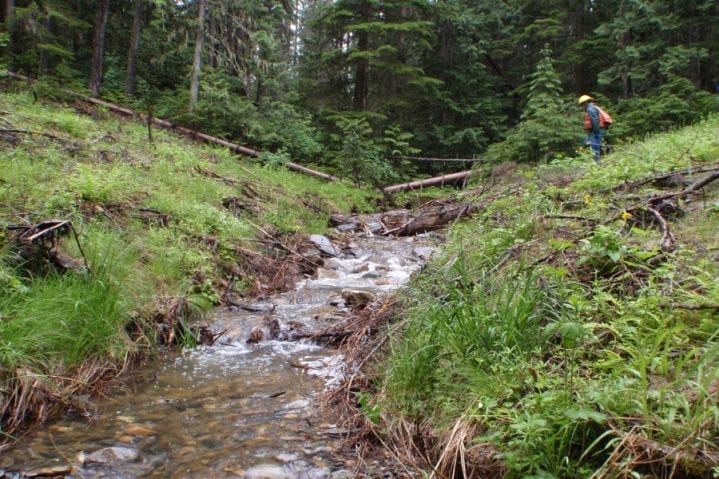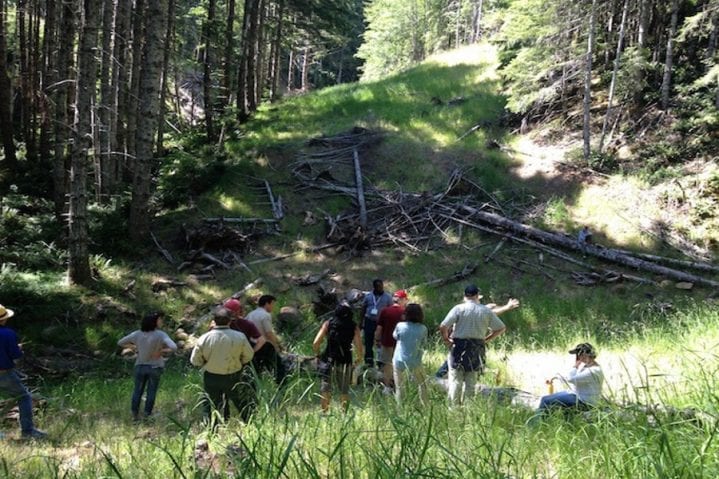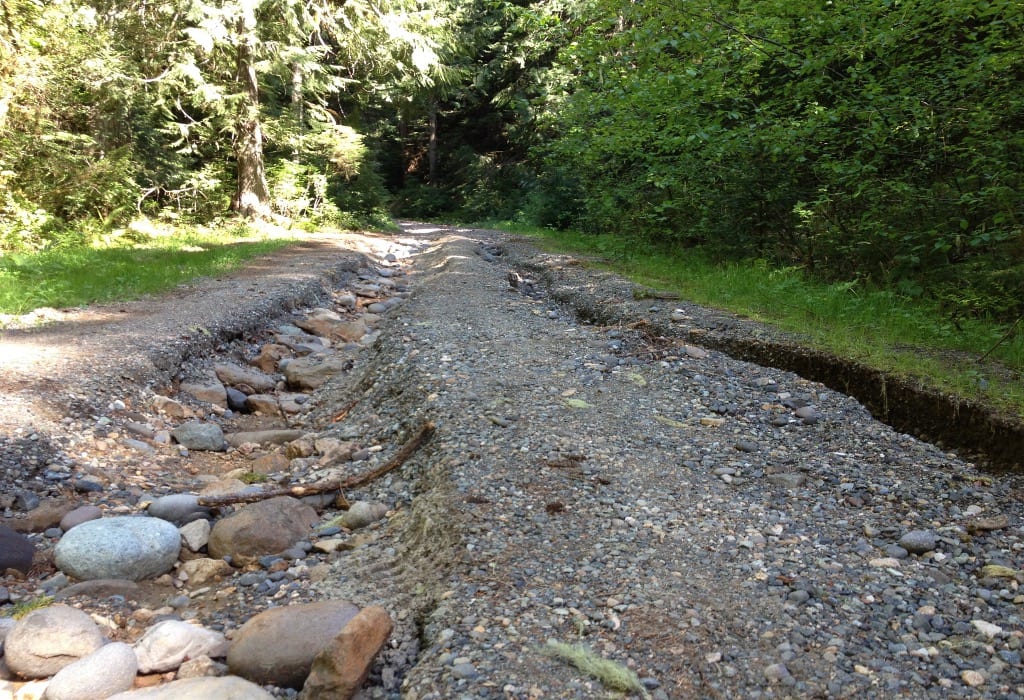As kids return to school from their summer breaks, our Senators and Representatives are also returning to D.C. from their August recess. A multitude of crucial issues are waiting for them, many of which will likely run aground in the slog of contentious politics. Yet one of Congress’s key roles is to pass the Federal budget and that’s critical for the management of the public lands we love. Before the summer began, the House finished their budget bills (i.e. appropriations), and sadly it failed to fund a crucial Forest Service restoration program: Legacy Roads and Trails (LRT).
In 2008, Congress established the Legacy Roads and Trails program to help improve watershed conditions and fisheries by providing funding and direction to remove unneeded roads, perform critical maintenance on roads and trails, and reconnect streams for migrating fish. In the first five years, Congress sent $270 million dollars to the Forest Service resulting in cleaner water for local towns and cities, improved and reconnected habitat for threatened and endangered species, and more reliable recreational opportunities. The program was a jewel of success in an agency hard-pressed to show tangible results.

LRT dollars were used to remove an old culvert and reconnect the stream for migrating fish. Adam Switalski. Wildlands CPR
Unfortunately, rather than making the LRT program a permanent part of the Forest Service budget, or even increase funding, Congress has steadily decreased its support to a paltry $160 million dollars over the past five years combined. Of course, the Trump administration seeks to eliminate the program altogether, falsely claiming the agency’s existing road and trail budgets can produce the same results, even while the administration seeks to cut funding for those budgets by over $166 million dollars. In fact, Trump’s last budget readily admits his proposed cuts will limit road and trail access due to inadequate maintenance and unaddressed safety concerns. This is because the agency would be forced to maintain only a small subset of priority passenger and high-clearance roads, leaving the rest to further degrade the ecological integrity of our national forests. Ironically, the LRT program provided crucial support for some of the most important maintenance and safety concerns, while also removing unneeded roads to reduce the agency’s costs. Surprisingly, and sadly, the House granted Trump’s wish by defunding the program for the second year in a row in its bill for Forest Service appropriations.
To add even more insult, at the end of July the Senate Energy and Public Works Committee passed a Surface Transportation Bill that steals the LRT title, and repurposes the program to focus on “general public access” with no definition of what that means. They wish to change LRT’s role from improving water quality, watershed conditions, and habitat for threatened and endangered aquatic species to one that fixes ALL roads, no matter the harm they may cause or if it’s an illegal road or user-built road or whatever. Legacy Roads and Trails was the only program dedicated to removing old roads the agency no longer needs, to fix barriers to fish migration, and to maintain roads and trails that typically never have adequate funds to keep them in good condition.
As the halls in Congress once again fill up with staffers and Senators in September, hurriedly trying to shore up budget deals before the Fiscal Year runs out, the Senate needs to prioritize restoring the Legacy Roads and Trails program to its original intent and funding. The Federal Government has a duty to ensure proper management for Federal Lands, and that requires funding important programs that restores and protects wild places and waters. Lawmakers should permanently authorize the program with funding that, at the very least, matches levels from its first five years. Of course LRT needs much more than that, but at least the Forest Service could begin again.
Please contact your Senators today, and express your support for the Legacy Roads and Trail Program.

Rewilding unneeded forest roads restores secure habitat for wildlife such as bears and elk. WildEarth Guardians
Read more: Why is the Legacy Roads & Trails Program so important?
The Forest Service is responsible for over 370,000 miles of official roads, (it has many thousands more illegal roads) making it one of the largest transportation management agencies in the world. To put that in perspective, a flight between Los Angeles and New York covers roughly 2,450 miles, so a person would need to fly 151 times to travel the length of the Forest Service road system. A majority of these roads were built for another era ruled by the Lords of Yesterday (logging, mining and grazing – highly subsidized by Congress), which was the agency’s primary focus for so many decades. Today, many of these old roads, often built in the wrong place, are simply unneeded, grown over with weeds, or falling apart. The agency continually lacks adequate resources to properly maintain the overburdened system leading to today’s legacy of dirt-choked streams, fragmented wildlife habitat, and road failures/closures.
Years of scientific studies and research demonstrates that forest roads harm ecosystems in a myriad of ways, so much so that an entirely new field of study emerged called road ecology. These harmful environmental consequences include:
- increased instances of human-caused wildfires, and changes where and how wildfires burn;
- large amounts of sediment runoff into streams, more than any other land management activity (including logging), which harms fish and reduces the quality and cost of people’s drinking water supplies.
- mass wasting (i.e. landslides) where entire road sections slide away, especially during storm events;
- harm to wildlife by altering habitat, increasing fragmentation, changing wildlife movements, and direct mortality through collisions, – all leading to reductions in abundance and distribution of species such as bears, lynx and elk; and
- Increased invasions of non-native species.
The list goes on. The obvious conclusion is that reducing the Forest Service’s unsustainable road system will greatly improve watershed conditions and the overall ecological integrity of our national forests. Doing so requires a commitment of resources and a shift in priority for the agency.
More details can be found in our report found here.
